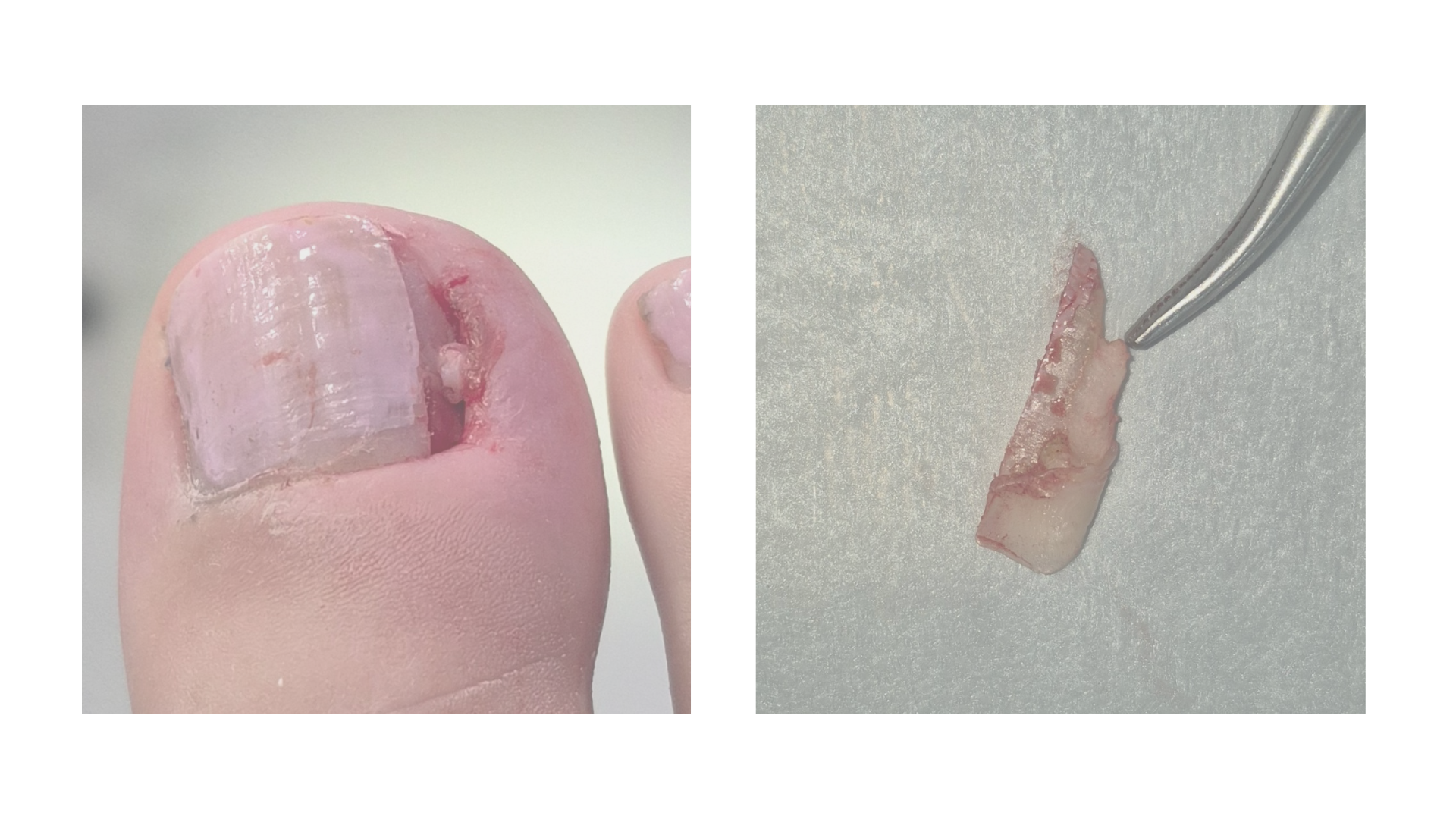Ingrown Toenail — Case Study
Patient: 25 years old, female
Symptoms: Painful in great toe around nail edge
Investigation: Clinical diagnosis
Diagnosis: Ingrown toenail (onychocryptosis)
A 25-year-old female presented to Key Health Medical Centre with persistent pain, swelling, and redness affecting the lateral aspect of his right great toe. The patient reported a gradual worsening over two weeks, with increasing discomfort when walking and wearing enclosed footwear.
On examination, there was evidence of an ingrown toenail with associated inflammation and early granulation tissue formation along the lateral nail fold. No systemic symptoms were reported.
Background
Ingrown toenails (onychocryptosis) are a common condition where the nail edge grows into the periungual skin, leading to pain, inflammation, and in some cases, secondary infection. It frequently affects young adults and can be caused by factors such as improper nail trimming, tight footwear, trauma, or genetic predisposition to curved nail growth.
Management
After discussing treatment options with the patient — including conservative measures versus minor surgical intervention — it was agreed to proceed with a partial nail avulsion and cauterisation of the nailbed base under local anaesthetic.
The procedure involved:
Administering a digital ring block to achieve adequate anaesthesia.
Partially resecting the affected lateral nail plate using sterile nail scissors.
Applying cauterisation to the exposed nail matrix to reduce the risk of recurrence.
A sterile dressing was applied, and the patient was advised on wound care, appropriate footwear, and signs of infection to monitor.
Outcome
At follow-up one week post-procedure, the patient reported significant improvement in pain and mobility. The surgical site showed appropriate healing with reduced inflammation and no signs of infection. Full resolution was achieved within three weeks, and the patient was counselled on preventive foot care strategies to minimise recurrence risk.
Clinical Note
Partial nail avulsion with phenolisation or cauterisation remains an effective and well-tolerated treatment for recurrent or complicated ingrown toenails, with low recurrence rates when performed appropriately.
Photos courtesy of Dr Anthony Yap
Picture 1. Immediately after procedure.
Picture2. Forceps pointing to jagged area of nail causing pain and inflammation



